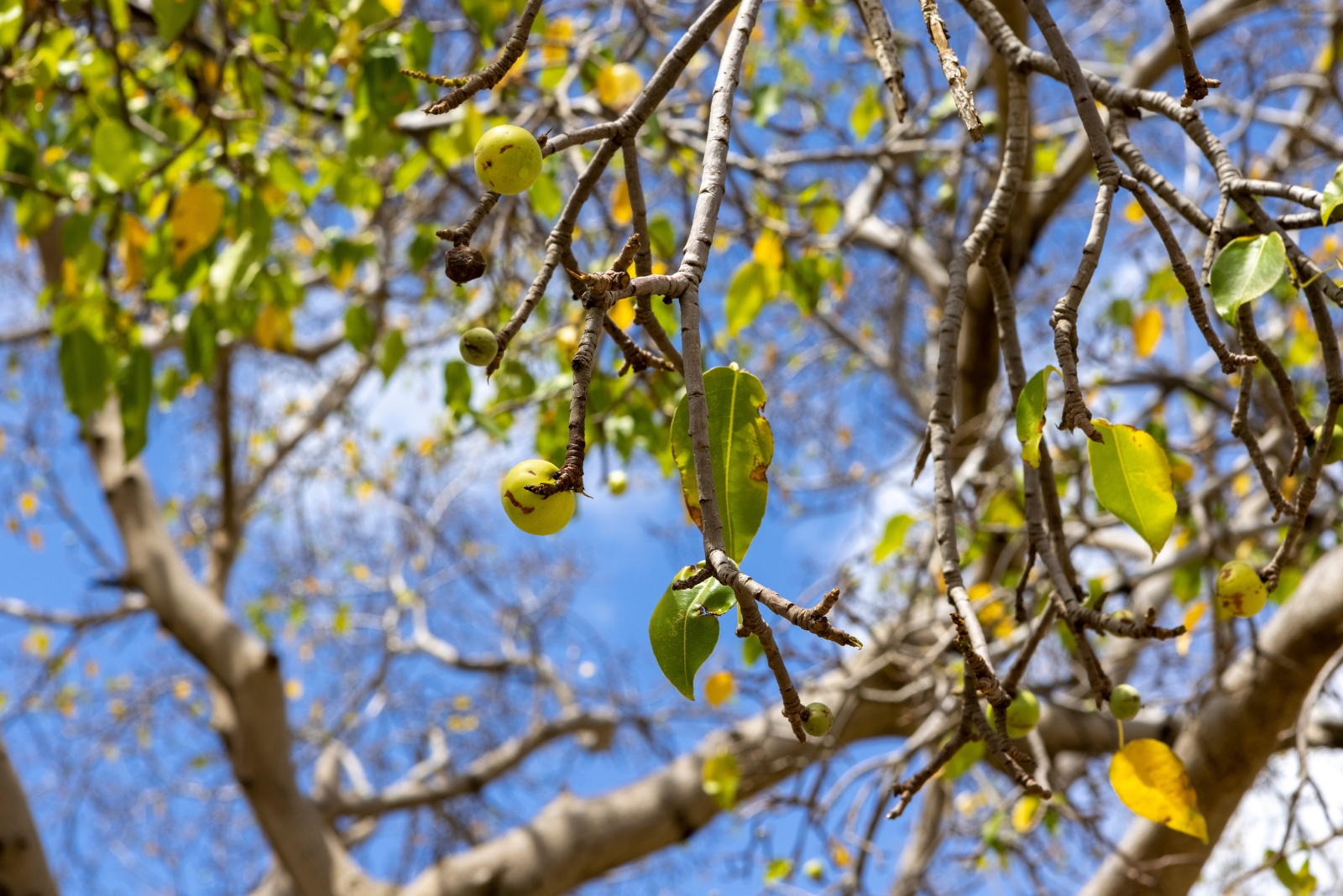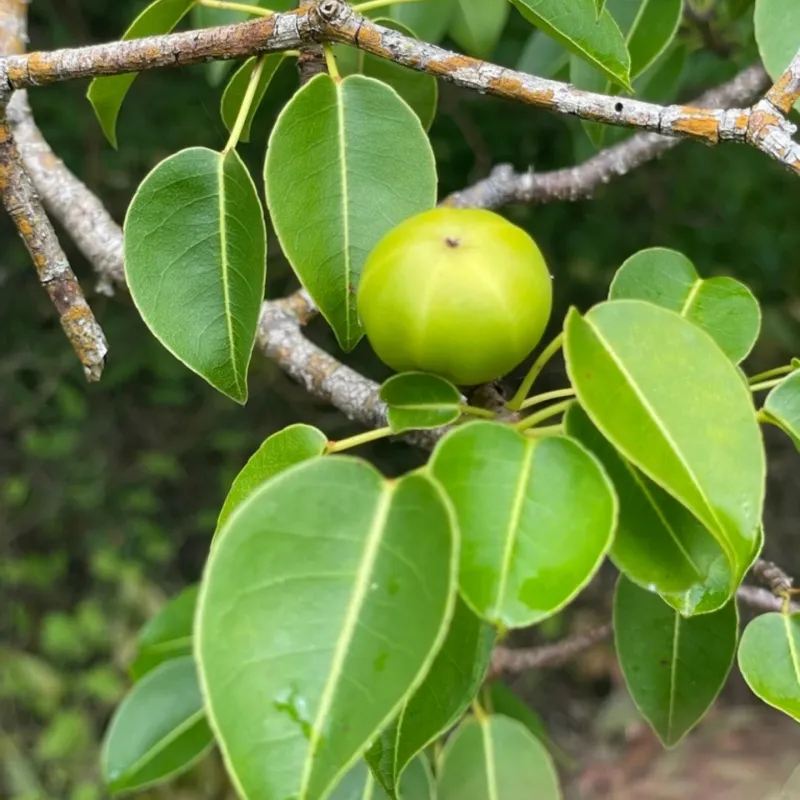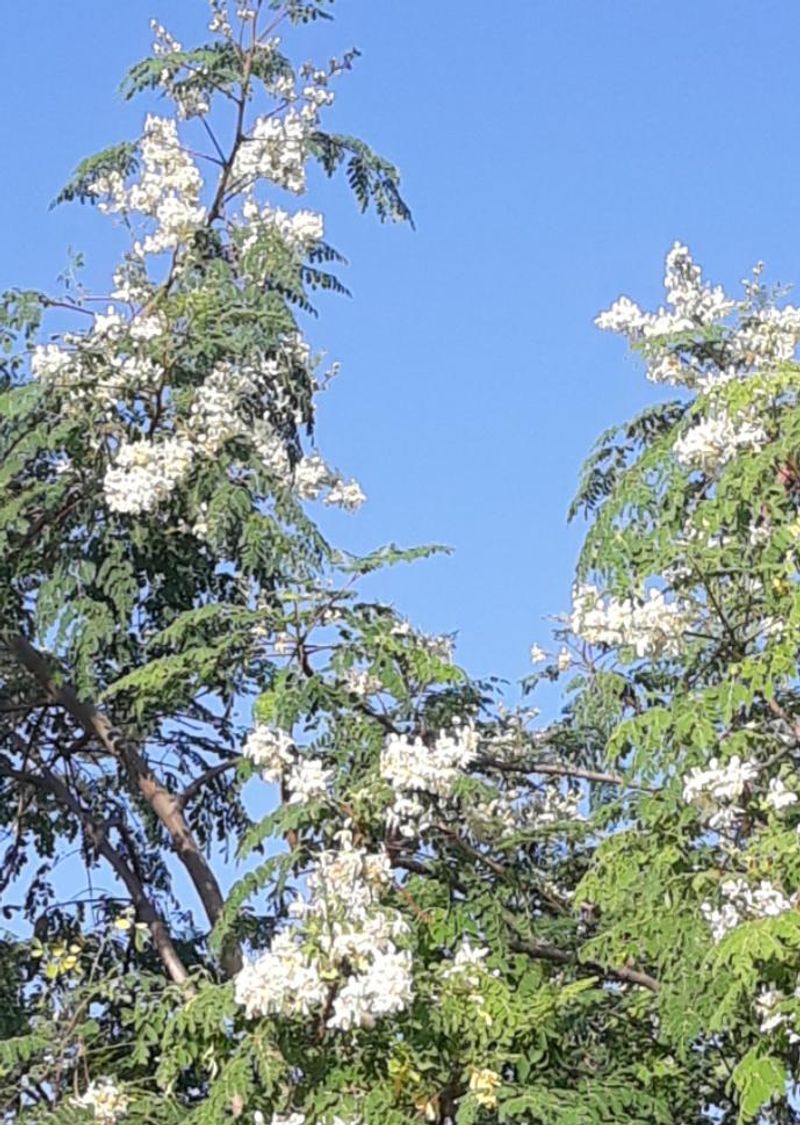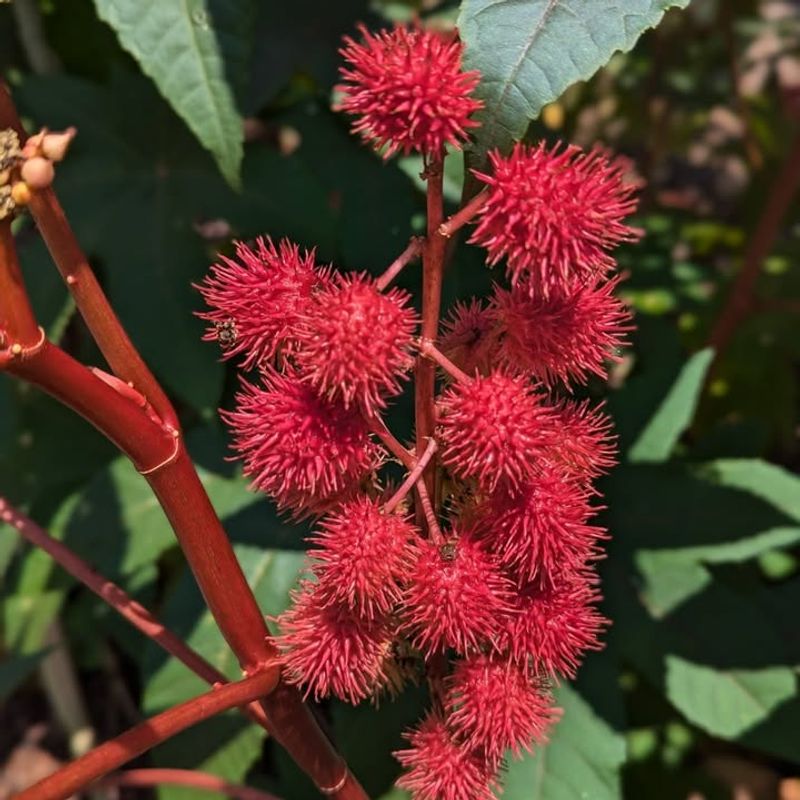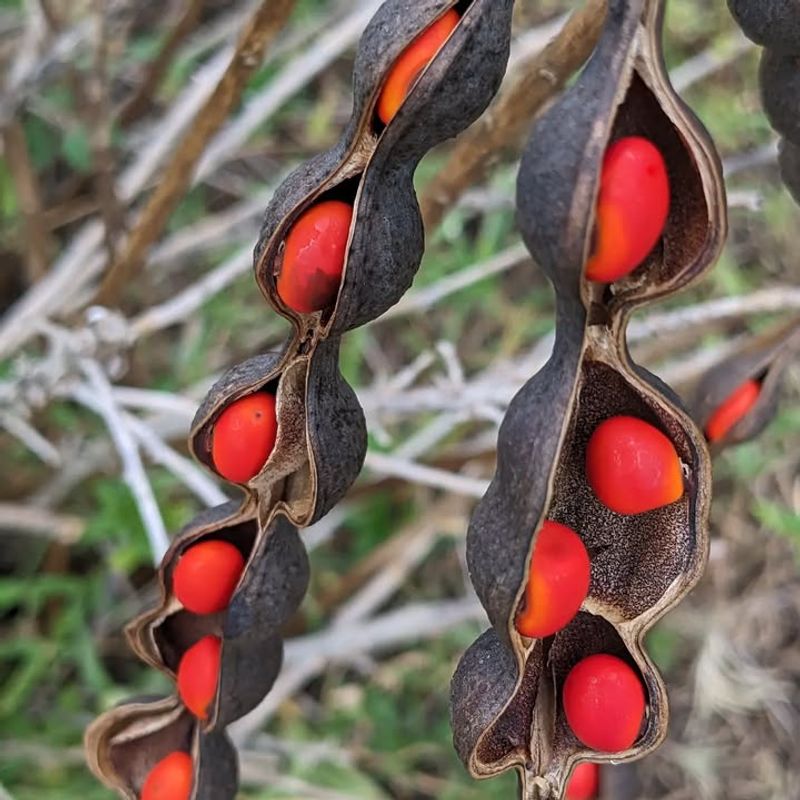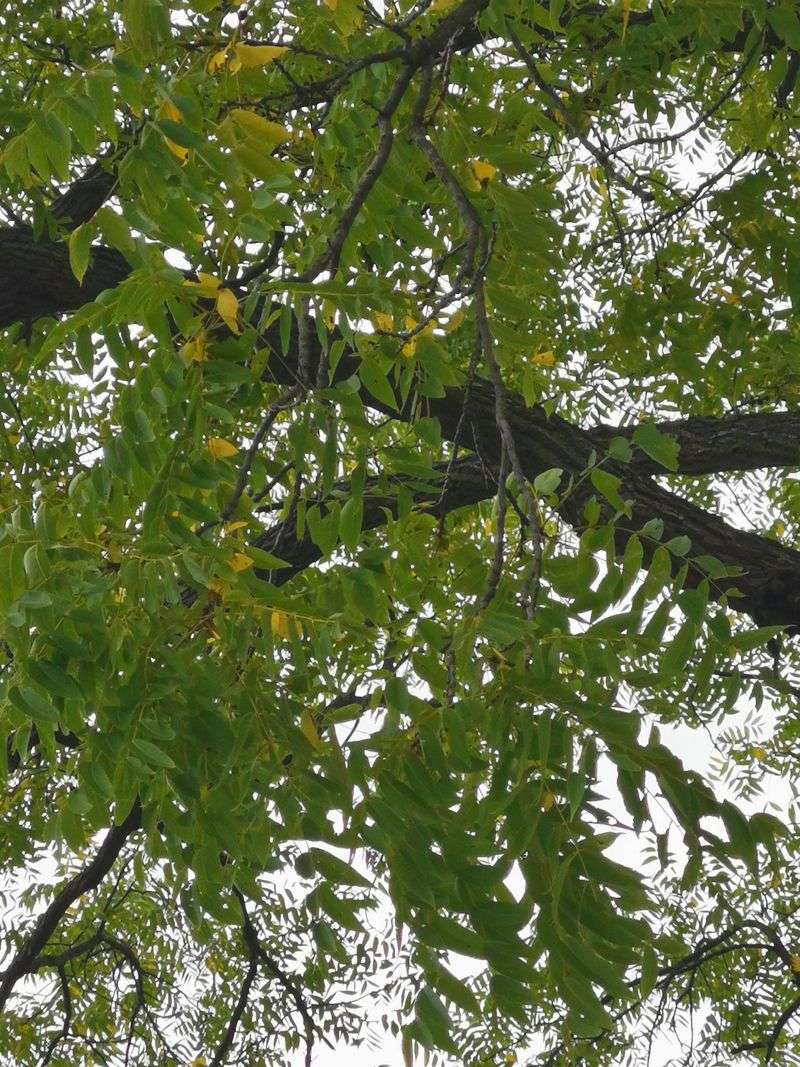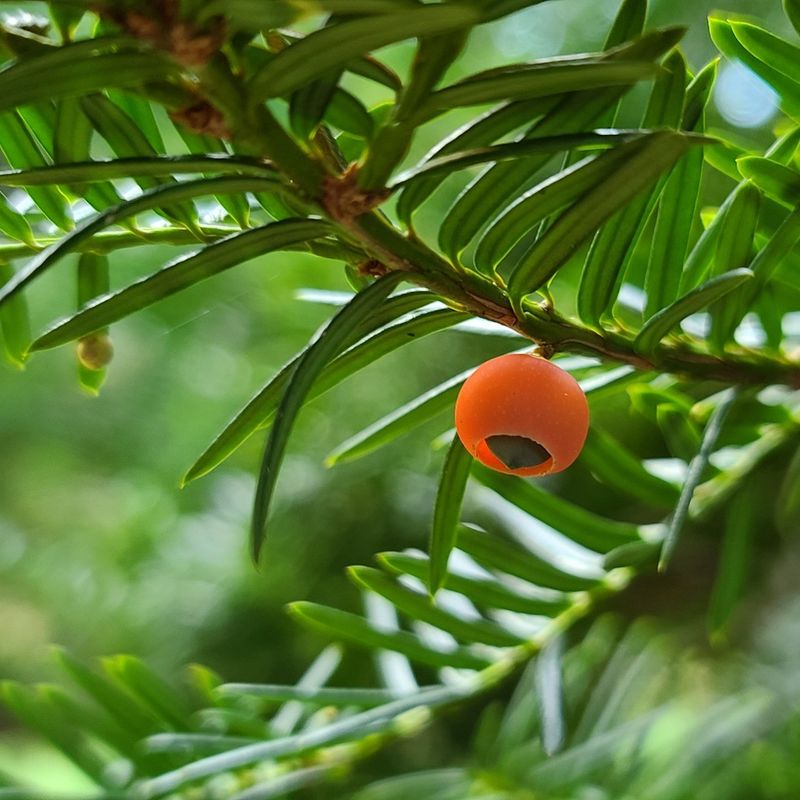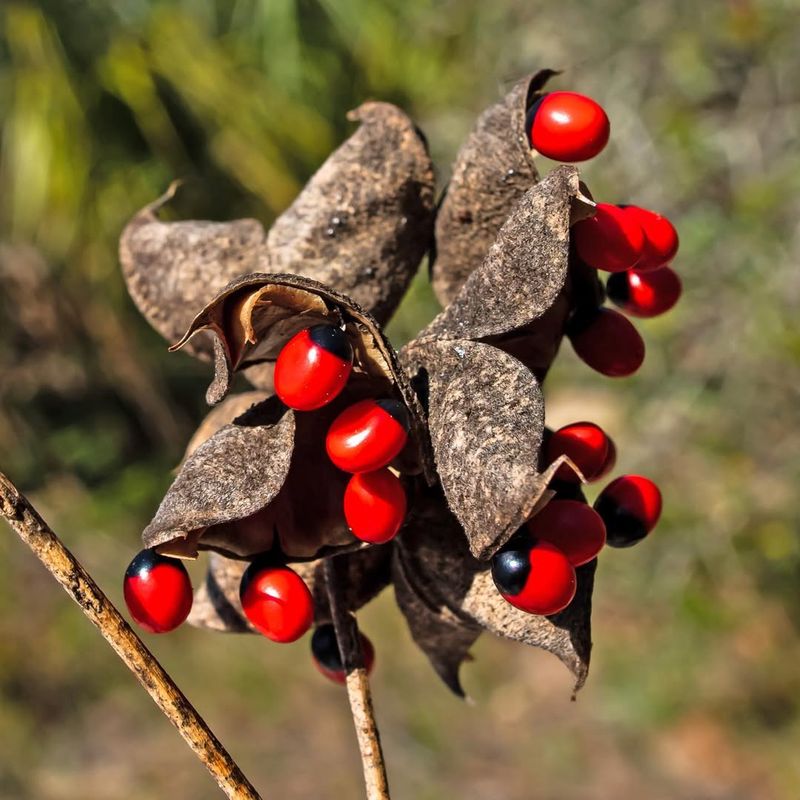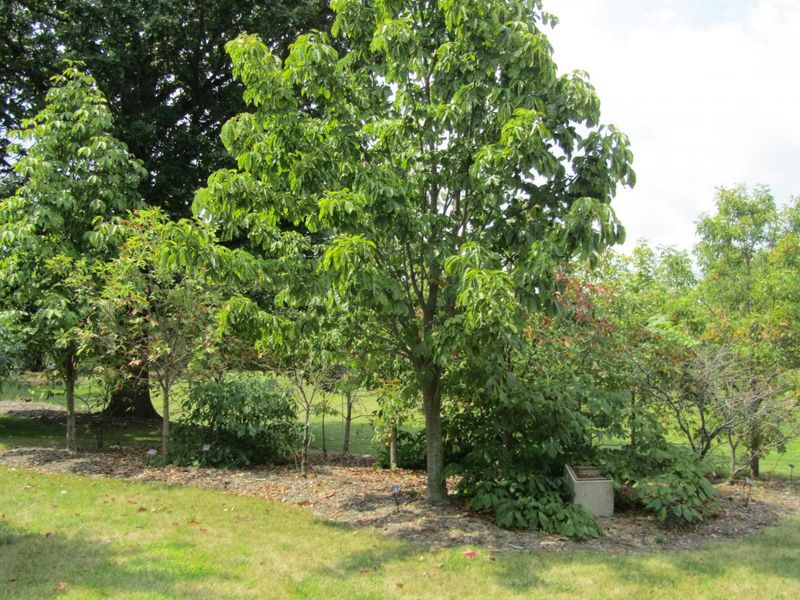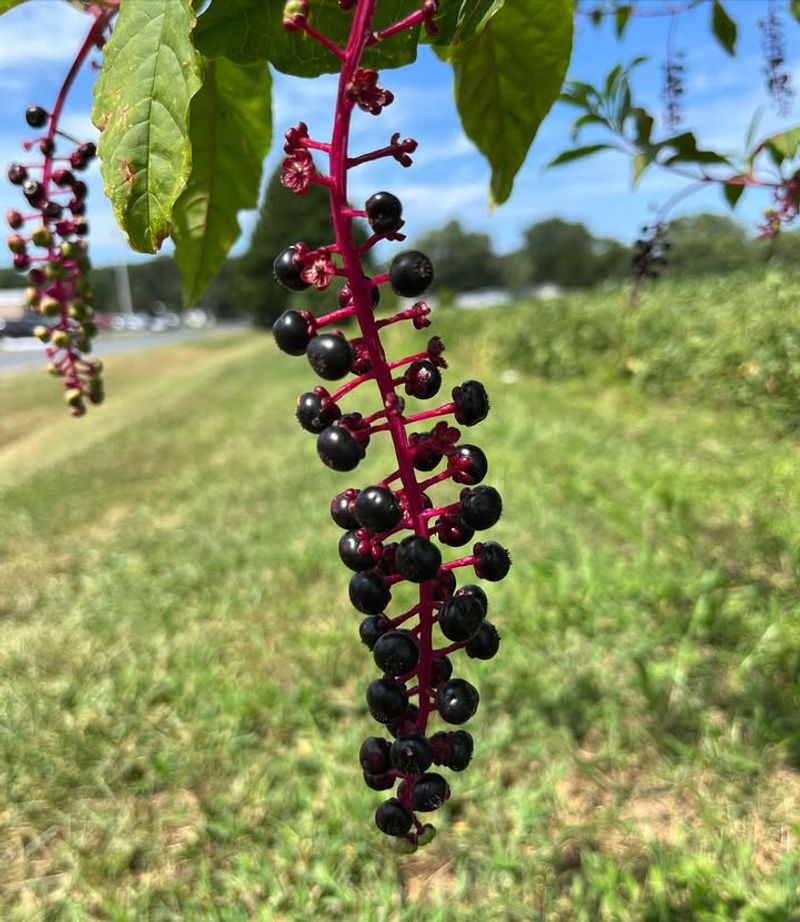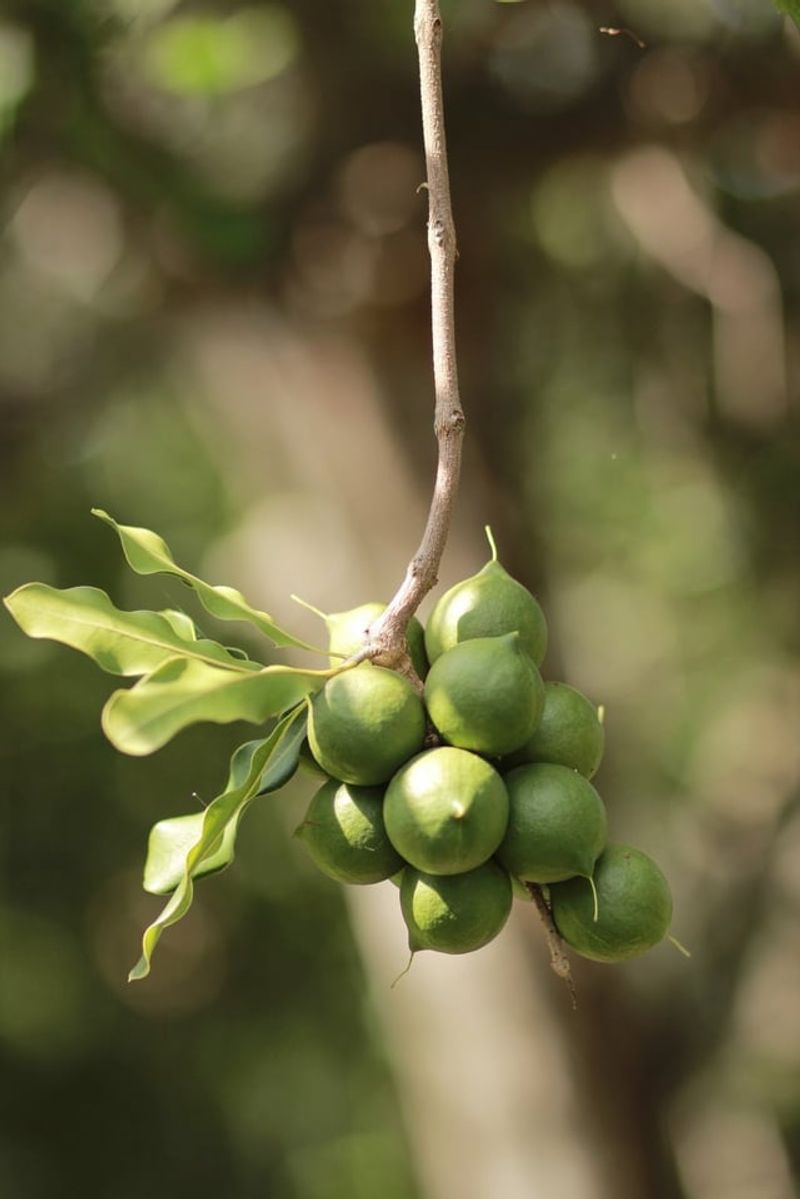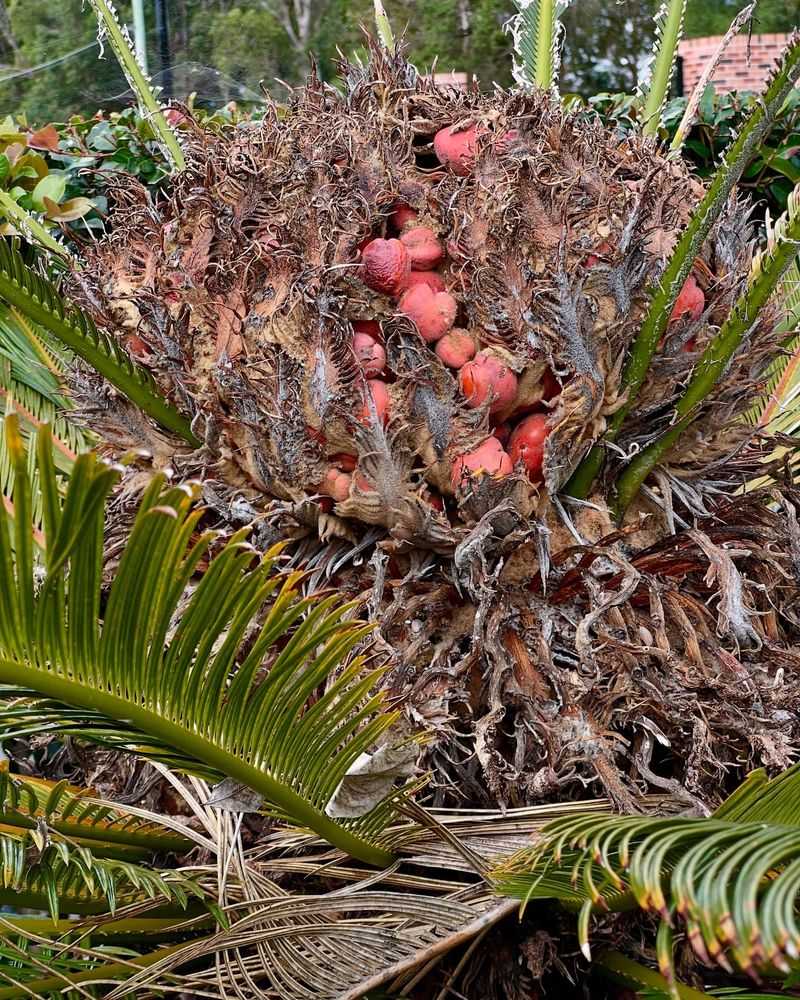Fall in Florida brings colorful leaves—and sometimes unexpected hazards in your yard. Certain fruits and nuts can be toxic to kids, pets, or even unwary adults.
I’ve rounded up eleven to keep an eye on so your Florida garden stays safe. Enjoy the season without any nasty surprises underfoot.
1. Manchineel Apple
Often called the most dangerous tree in the world, manchineel produces fruit that looks like innocent green apples. Touching or eating these fruits causes severe burns, blistering, and intense pain that can last for days.
Found along Florida’s coastlines, especially in the Keys and southern beaches, these trees are usually marked with warning signs. Even standing under one during rain can cause skin irritation from the toxic sap dripping down.
Keep children and pets far away from these deceptive fruits at all times.
2. Chinaberry Fruits
Chinaberry trees produce marble-sized yellow fruits that might tempt curious kids exploring Florida neighborhoods. Just a handful of these berries can cause serious stomach problems, vomiting, and even affect the nervous system.
Common in yards and parks throughout the state, these ornamental trees drop their toxic fruit during fall and winter months. Birds can eat them safely, which confuses people into thinking they’re harmless for humans too.
Always supervise children playing near these attractive but dangerous trees.
3. Castor Bean Seeds
Castor beans contain ricin, one of the deadliest natural poisons on Earth. These shiny, brown-speckled seeds look like oversized beans and grow on tall plants with large, tropical-looking leaves throughout Florida.
Swallowing even one or two seeds can be fatal if chewed, causing severe organ failure within days. Many gardeners plant them for their dramatic foliage without realizing the extreme danger they pose.
Remove these plants immediately if you have them in your Florida yard, especially with kids around.
4. Coral Bean Seeds
Bright scarlet seeds make coral beans incredibly attractive to children who might mistake them for candy. Native to Florida’s woodlands and coastal areas, these beautiful but toxic seeds contain alkaloids that affect the heart and nervous system.
Symptoms include confusion, tremors, and breathing difficulties that require immediate medical attention. Despite their danger, coral bean plants are often used in Florida landscaping for their stunning red flowers.
Teach kids never to touch or collect these eye-catching but poisonous seeds in natural areas.
5. Black Walnut Hulls
While the nut inside is edible, the green outer hull of black walnuts releases juglone, a toxic chemical that can irritate skin and cause digestive upset. Some Florida homeowners have these trees in their yards without knowing about the potential hazards.
Handling the hulls with bare hands leads to stubborn brown stains and possible rashes that take weeks to fade completely. The toxin also kills many garden plants growing underneath.
Wear gloves when cleaning up these messy fruits from your Florida property.
6. Yew Berry Arils
Yew shrubs produce fleshy red cups around a single poisonous seed that kids might pop in their mouths. Every part of this evergreen plant is extremely toxic except the red flesh, but separating them is nearly impossible for children.
Common in Florida foundation plantings and formal gardens, yews cause rapid heart failure and breathing problems when ingested. Symptoms appear quickly, sometimes within just an hour of eating the seeds.
Consider replacing these dangerous ornamentals with safer alternatives in your Florida landscape design.
7. Rosary Pea Seeds
Beautiful red seeds with a black spot make rosary peas look like nature’s jewelry, but they contain abrin, more poisonous than ricin. Found climbing on fences and trees in southern Florida, these vines produce seed pods that split open to reveal the deadly contents.
Chewing or breaking the hard seed coat releases the toxin, causing organ shutdown and potentially death within days. People once used them for beads and jewelry until the dangers became widely known.
Never let children collect these deceptively pretty seeds around Florida properties.
8. Buckeye Nuts
Smooth, shiny buckeye nuts resemble edible chestnuts but pack a toxic punch that causes severe vomiting and muscle weakness. Several buckeye species grow in northern Florida’s forests and parks, dropping their tempting nuts in fall.
The distinctive circular scar on each nut gives them their name, supposedly resembling a deer’s eye. Native Americans knew how to process them safely, but modern people should simply avoid them entirely.
Explain to kids that not all nuts are safe to eat, especially in Florida’s diverse natural areas.
9. Pokeweed Berries
Dark purple berries hanging in grape-like clusters make pokeweed look delicious, but eating them raw causes serious poisoning. Growing wild throughout Florida along roadsides and in disturbed areas, this tall plant with reddish stems is hard to miss.
Young leaves can be eaten if prepared correctly, but the berries remain toxic no matter what. Children and pets are most at risk because the juice stains hands and mouths purple, making it obvious when they’ve been eaten.
Pull these invasive plants from your Florida yard before they produce berries each summer.
10. Macadamia Nuts (for pets)
While perfectly safe for humans, macadamia nuts are surprisingly toxic to dogs, causing weakness, tremors, and high fever. Some Florida homeowners grow these tropical nut trees without realizing the danger to their four-legged family members.
Dogs who eat even a small amount show symptoms within 12 hours, including an inability to stand or walk properly. The good news is that most dogs recover completely with veterinary care and supportive treatment.
Keep fallen macadamia nuts picked up if you have these trees in your Florida landscape and own pets.
11. Sago Palm Seeds
Sago palms are everywhere in Florida landscaping, but their orange-red seeds contain deadly toxins that destroy the liver. Despite the name, they’re not true palms but ancient cycads that have poisoned countless pets and children over the years.
Every part of the plant is toxic, with seeds being the most dangerous portion by far. Dogs seem particularly attracted to the seeds, leading to emergency vet visits throughout the state.
Consider removing these popular but hazardous plants from your Florida property, especially if you have curious toddlers or pets.

